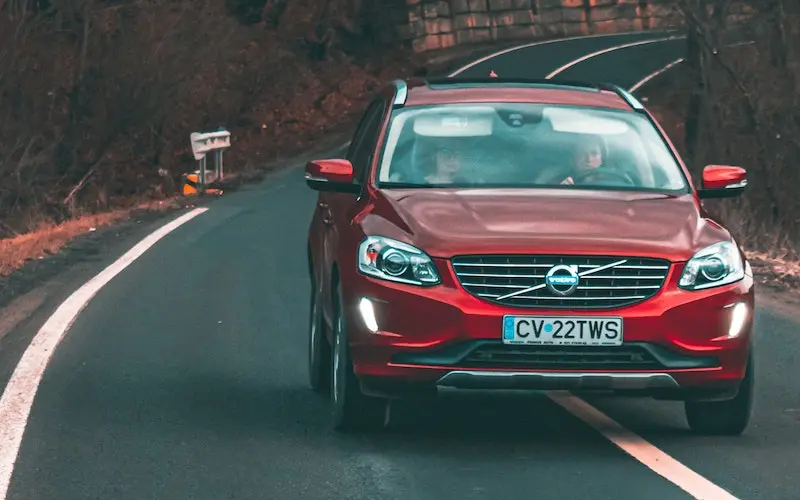For decades, Volvo has cultivated a reputation for safety, reliability, and comfort. But beyond these brand associations, how would Volvo’s vehicle lineup be categorized? As a European luxury brand, Volvo competes with the likes of BMW and Mercedes-Benz, but stands apart in some key ways. Let’s examine What Type of Car is Volvo and its model philosophy to understand the unique niche Volvo has carved out.
What Type of Car is Volvo?
Volvo is headquartered in Gothenburg, Sweden and was founded in 1927 as a subsidiary of the ball bearing maker SKF. Some founding principles included:
- Durability and longevity
- Simplicity in design
- Safety and protection
These practical values suited the harsh driving conditions in Sweden and set Volvo apart from more ornate European luxury marques.
Classification as a Near-Luxury Brand
Volvo straddles the line between mainstream and luxury. Key characteristics:
- Solid, upscale construction yet more minimalist styling
- Well-appointed cabins with premium materials
- Advanced safety tech and driver assistance features
- Powerful yet efficient powertrains
- AWD capability on most models
- Mainstream price points compared to Germany’s luxury elite
This “near-luxury” zone mixes premium appeal with accessibility.
Evolution of Volvo Brand Ethos
Volvo built its identity around these core values:
- Safety – Leading-edge safety research and life-saving innovations make Volvo synonymous with occupant protection.
- Durability – Robust Swedish engineering for demanding cold weather and road conditions cultivated legendary reliability.
- Family-friendly – Roominess, ergonomics, and amenities tailored towards family use.
- Substance over flash – Understated Scandanavian design eschews ornate luxury cues.
- Technical innovation – Continuous R&D into engines, safety, and autonomous driving keeps Volvo at the forefront of technology.
By sticking close to its roots, Volvo built trust and esteem.
Characteristic Design Elements
Volvo employs a distinctive design language:
- Strong shoulder line stretching front to rear
- Floating roof effect with blacked-out pillars
- Prominent grille with ironmark logo
- Hammerhead headlights and T-shaped LED light signatures
- Elegantly minimalist interior with tablet-style touchscreen
- Large sunroof amplifying airy, open cabin space
These cues give Volvos a sculpted yet functional aesthetic inside and out.
Today’s Volvo Lineup
Volvo’s current portfolio includes:
Sedans – S60, S90
Wagons – V60, V90, V90 Cross Country
SUVs – Compact XC40, midsize XC60, large XC90
Electric – XC40 Recharge
This broad model range allows Volvo to compete across segments, while its wagons offer capabilities not found elsewhere today.
Demographic Target Buyer
Typical Volvo customers include:
- High-income professionals and families seeking an alternative to German luxury brands
- Shoppers who prioritize safety, versatility and Scandinavian design
- Urban residents who need a spacious, maneuverable family vehicle
- Outdoorsy, adventurous types needing cargo/passenger flexibility
- Tech-savvy individuals interested in innovations like electrification and autonomous driving
Volvo appeals to those wanting substance and unique style rather than flashiness from their vehicle.
How Volvo Differs from Other Luxury Automakers
While competing in the same premium space, Volvos differ from brands like BMW, Audi and Mercedes:
Less Focus on Performance
Volvo emphasizes durability, safety and comfort over pure performance. Yet their powertrains remain responsive.
Restraint in Design
Volvo styling exhibits discipline and restraint, not flashy ornamentation. They avoid large, aggressive grilles and bodies.
Wagons and Practicality
In addition to sedans and SUVs, Volvo offers expertly engineered wagons ideal for families.
Value Positioning
Volvos aren’t cheap, but are priced below German rivals on average when comparing base models.
Global But Uniquely Swedish Brand
Germans have an understated, functional aesthetic compared to Italy’s flash or England’s refinement.
Safety-First Mentality
Safety innovations and testing set Volvos apart. It’s integral to their R&D.
Advanced Technology Adoption
Volvo aggressively adds tech like autonomous systems before luxury competitors.
This combination of technical innovation, inclusive luxury, and Swedish pragmatism characterizes Volvo vehicles.
The Future of Volvo
Under Geely ownership since 2010, Volvo continues evolving:
- Electrification – Volvo aims for 50% EV sales by 2025, ahead of competitors. More EVs coming.
- Autonomy – Volvo actively develops autonomous highway and parking capabilities to deploy over time.
- Subscription models – Alternatives to buying or leasing like the Care by Volvo subscription plan.
- Combined heritage/innovation – Leveraging Swedish design and durability while advancing technologies in a thoughtful way.
- Brand differentiation – Strengthening Volvo’s identity as the smart choice apart from German elitism.
By playing to its strengths of safety leadership, minimalist styling and technical innovation, Volvo can reinforce its reputation as cars for the thoughtful buyer.
Conclusion
Volvo sits in an intriguing niche between mainstream and full luxury that mixes proven Swedish engineering, substantive styling, comfort, and innovative technology. Volvo vehicles appeal to buyers who prioritize interior space, capability, and progressive tech like safety systems and electrification over flashier badge cachet. Their lineup caters to family use and active lifestyles while offering premium touches like all-wheel drive, quality materials, and the latest amenities across models ranging from sedans to SUVs. Moving forward, Volvo aims to reinforce its strengths while leading in crucial next-generation areas like electrification and autonomous driving.
